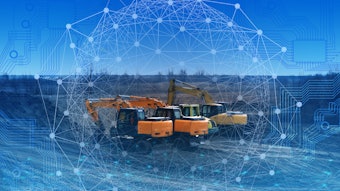
As the digitization of the construction industry accelerates and evolves, general contractors have made great strides in innovation at the jobsite, with technologies like the Internet of Things (IoT), reality capture and autonomous vehicles bringing new advantages. At the same time, many have overlooked the substantial productivity gains they could be making by giving the same attention to back-office processes. To save time and money across all facets of their business, organizations need to think holistically about their digital transformation, including one area often still mired in manual, disconnected processes—payments.
How much easier would your project administration be if you could replace the traditional payment process with one that simplifies and standardizes critical processes? One that boosts efficiency and control―for all stakeholders―across invoicing, payment and compliance management? One that ultimately could reduce your risk as a general contractor, owner or subcontractor, while also freeing up teams’ time to focus on activities that are more beneficial to your business?
A collaborative payment management solution not only helps manage the payment and billing processes across project participants, but it also can forge better, more lasting partnerships in the industry by providing assurance everyone is paid fairly and on time. Such technology can streamline the payment process for construction companies of all sizes by managing payment due dates and related actions, as well as improving accuracy. It also eliminates inefficiencies and lowers a slew of risks, including human error, improper payments and liens that prevent the clean handover of a project to the owner.
Other Opportunities for Success
In addition to strengthening relationships and ironing out inefficiencies, automated payment solutions can also help companies eliminate manual steps and miscalculations by automatically generating accurate invoice documents linked to schedules of value, for example. Plus, they can help firms centralize the tracking of compliance and lien waiver management, in addition to other important documents and reporting, streamlining these crucial tasks and preventing further safeguards against risk to all stakeholders.
Automated payment solutions also enable team members to collaborate within one shared environment. With all parties using the same collaboration platform, owners, general contractors, and subcontractors all have needed visibility into compliance and payment status. As a result, they can anticipate and collaboratively address potential issues before they grow into pressing problems.
The automation and simplification that results from using a modern payment processing solution helps increase productivity and reduce errors. Additionally, firms can implement a standardized cloud-based system for financial processes across their enterprise resource planning (ERP) and accounting system to give a complete view of their partners’ business through the support reports, dashboards and analytics. This enables firms to capture and analyze payment data across their business, providing a more strategic current state of affairs and helping answer questions delivered when and how they want them.
In all, these modern approaches to payment solutions can help mitigate financial, legal or reputational risk, while improving cash flow. Ultimately, this improved cash flow also allows for organizations to more predictably meet payroll, hire and invest in their business.
As construction sites continue to incorporate cutting-edge technology to help teams complete projects in a safer, more streamlined way, it simply makes sense to further modernize the payments process as well. It can provide all stakeholders with peace of mind by helping put an end to those pesky paper-driven office tasks that are already being eliminated with cutting-edge technology on the jobsite.




























